The Visit to NYC
and the Encounter with NEPENTHES
The three years photographer Mashiro Shoda had spent in NYC became a major turning point for him. After a series of coincidences, the young Shoda had arrived at the JFK Airport in NYC in July 2005 and encountered with people working for NEPENTHES NY. As the relationship between he and the brand became closer, he started to participate in making the seasonal image booklets of NEEDLES. However, we should begin this interview by asking why he went to NYC and decided to live there as well as how he spent his early days in the Big Apple. Here he revealed how he had his mind set on working in advertising by using his ability in portrait photography after having lived in the city for three years.
ー Did you have a relationship with NEPENTHES before starting to take photos for a NEEDLES image booklet in 2009?
I did. We first met each other when I visited NYC to see what the city was like before moving to there in 2005. Hair and make-up artist Norikata Noda introduced Toku (Tokuro Aoyagi, the creative director of NEPENTHES) to me. He then brought me to lunch and we had soba noodle together. After having saved money in Tokyo for a year since then, I moved to NYC. We have established a family-like relationship after that.
ー What kind of job did you do in Tokyo?
I worked at a rice mill. So, if I carry a rice bag, I'm still able to guess how many kilos the bag is (laughs). I also worked for a Pizza restaurant. My daily earnings were around 15,000yen in total at the time. And my monthly rent was about 30,000yen. I lived in a room without a bath, eating bananas every day. But I could save just about 100,000yen a month even though I lived such a humble life. So, it took me a year and a half to save enough money to move to NYC.
ー Why did you work at a rice mill? I guess you could have done something related to photography.
I'm not sure but I think I wanted to have a job with a fixed salary. Just around that time, I became a freelance photographer after having spent four years studying under my photography teacher Azuma Ishida. Though I couldn’t earn much money, I kind of enjoyed the low profile life. Whenever I see a rice bag, I still become eager to carry it (laughs). It's deeply ingrained in me.
ー Then you finally moved to NYC. How was it?
It was November 2005 and the weather was freezing cold. I also remember that I spent a third of the money I had saved - I think it was several million yen - within the first month for drinking with my friends (laughs). Because I had few warm clothes, Toku gave me lots of those, saying “It’ll keep you warm.” I wore some of the clothes until recently. After being free from worry about clothes, however, I realized that I ran out the money (laughs). I then asked Toku for some advice and he suggested me the Soba restaurant we had visited together. Later I got a waiter job there, so I can say that Toku supported me in food and clothing in NYC.
ー By the way, what was the reason you chose NYC instead of other cities like London or Berlin?
When becoming a freelancer, I happened to meet my senior disciple Tommy (a photographer known for a series of “Mosatsu” photos). He temporarily returned to Japan from NYC at that time and invited me to his place in the U.S. when I told him that I would be a freelancer. I thought it was a good idea and told to my elder brother about my plan to visit there. Then he said “Why don’t you move to the city?” and I thought that sounded like a plan. He even bought me an open ticket to NYC.
ー What a cool brother!
He handed me the ticket saying “You don’t have to come back if you like.” Though I planned to stay there for a week, I eventually spent three weeks. Tommy gave me a bed throughout the period. I really enjoyed the time and became eager to live in NYC. Tommy showed me lots of websites of photographers in the city and I got shocked.
− Did you become eager to study photography in NYC?
It was more like I got a clear goal. Although I also did fashion photography before that, I became eager to delvedeeper into portrait photography. Because I realized that what I did for fashion shooting was just a crap. I couldn’t even come close to proper fashion photography. But I thought I could be competitive if it came to portrait photography. Photographers in NYC tend to pursue their specialty unlike photographers in Tokyo who were seemingly required to perform a range of tasks. People often said “Can you take this kind of photos? How about that kind of photos?” or something like that. That’s totally different in NYC. In the city, your specialty is the only thing you should care. You have to compete on its depth. I had taken only portraits throughout the three years of my stay in NYC, strolling about the city with my 4x5 camera and flash lamp.
− How did you develop a film and print your photos there?
I used tips I got at the Soba restaurant to buy films and develop those. A tip life (laughs). All the waiters at the restaurant didn’t have a fixed payment. We gathered all the tips we got each day and split it evenly. So, we had to pay careful attention to each table. I guess the job taught me a good lesson on service because being a photographer is similar to entertaining guests. Both a waiter at a Soba restaurant and a photographer have to build a good relationship with his unknown customer / model by communicating with them. Therefore, I say to my assistants that they should work in the service industry such as Izakaya. When I began to work at the restaurant, I couldn’t speak English very well because it was only a few months after moving to the city. But I didn’t need to say so difficult things anyway. I just had to say things like “Soba, or, Udon?” (laughs)
− I’ve heard that you had taken as many photos as you could while doing a part-time job at that time.
I had something I really wanted to photograph. And I was exploring my own way of photography so seriously that I wasn’t even concerned about whether my photos could make money or not. I didn’t think about how I could get work at all. Right after getting an artist visa after spending three years in NYC, however, I got a job offer from Kokuyo for an advertisement. I photographed Ryuichi Sakamoto at the time.
− It was the first advertising job for you.
Yes. Photographer Issei Tajima introduced me to them. Having received huge financial rewards, the first thing I did was to quit the waiter job (laughs). Since then, I gradually began to get portrait job offers. I went to places like Venezuela and Philadelphia for a job from Japanese Number magazine. Around that time, I heard that my father had a cancer. I was told that he didn’t have much time left when visiting Japan to see him. And that was the reason I decided to go back to Japan. It was about a year after I got a visa, but it might have been a good opportunity as it turns out. It was January 2009. I heard an announcement saying Obama assumed the presidency while aboard an airplane to Japan.
The Return to Japan
and the Image Booklet of NEEDLES
His days in NYC was finished just like that. Being settled in Japan, Shoda began to build his career again from scratch. The project of making a NEEDLES image booklet emerged around that time. While changing a shooting spot every season from NYC to Santa Cruz, Santa Fe and El Paso, the project team looked for right locations as well as local people for modeling. To put it nicely, such shooting style can be described as a documentary. To tell the plain truth, however, it is a lack of plan. Although the style is the opposite of the one in advertising, Shoda still remembers it clearly.
ー After returning to Japan for the first time in three years, where did you stay in the beginning?
I stayed in my hometown, Tochigi. I had lived with my parents and helped out around the house until my father passed away. I joined an agency (D-CORD) and went to Tokyo, but couldn’t earn any money. Most of the photos in my portfolio at that time were too conceptual for the clients. As a matter of course, I couldn’t get any job offers. I once tried to use a credit-card loan which was shown on TV because I was in quite a tight situation. Not having enough money for train fare, I walked to the next station to apply, but the loan company rejected my application (laughs). I felt like it was the end of the world (laughs).
ー NEEDLES started its image booklet project around that time.
I took the first photos in NYC in January 2009. It was when I left the city. The photos were shot at the NY office of NEPENTHES and on the street, but it was snowing and awfully cold. The outside was so freezing that a cup of coffee turned into ice. But the team found so many good models on the street. I really enjoyed it. The second shooting (S/S 2010) was held in Santa Cruz on the Coast and we went to Santa Fe and El Paso of Texas for the third image booklet. Each shooting took about a week or two. Such great days! For the second shooting, we drove a van from San Francisco to Santa Cruz while looking for models and right locations with the help of a map. We held a shooting every day as well as scouting around for models while driving. Toku asked people on the street to do modeling for us and Shimizu chose outfits for the models. Then I shot them. It was so tough, but so simple shooting. I still remember it when I see the image booklets we made. Each shot has its own story. Looking back, I do think the models I photographed are just perfect.
ー You went to Santa Fe for the third shooting.
We dropped in a live music club to find a model because we thought there should be cool guys in such a place. Then we saw a bassist playing for his band. As he looked nice, we asked him to join us then and there. On the following day, we and the bassist went to a canyon together for shooting. We were always saying “Let’s find a man with culture” (laughs). We even cooked together. Each of us bought some food at a supermarket and made a dish to share with the others. I enjoyed doing it, too.
ー It’s like a summer camp.
Yeah, I did enjoy it. The memory becomes even clearer as I look through the image booklets. We also went to a town near the Mexican border for shooting to make the third booklet. But it was a crime-filled area in which I would be reluctant to take my camera out from my bag. We often heard the unpleasant episodes of the town like hundreds of people had been killed on the other side of the bridge. I was so scared (laughs). But we could finally find a model at a music store called GUITER CENTER.
ー Mainly working in advertising, now you may not have a chance to do such summer camp like shooting.
No, because I cannot do it without a plan. Honestly, I enjoyed all the shootings I’ve done with NEPENTHES so much. But I think I could have retouched the photos a bit better. Those were taken right after I began to use a digital camera (laughs).
ー Such documentary type of shooting you’ve done for those image booklets has a different photographical charm from the one for an advertising project.
Yeah, that is why I long for it a bit now. On the other hand, however, I think I cannot do such shooting anymore. So, the time we spent for NEEDLES shootings was truly precious.


NEEDLES 2009 FALL WINTER Photographed in New York

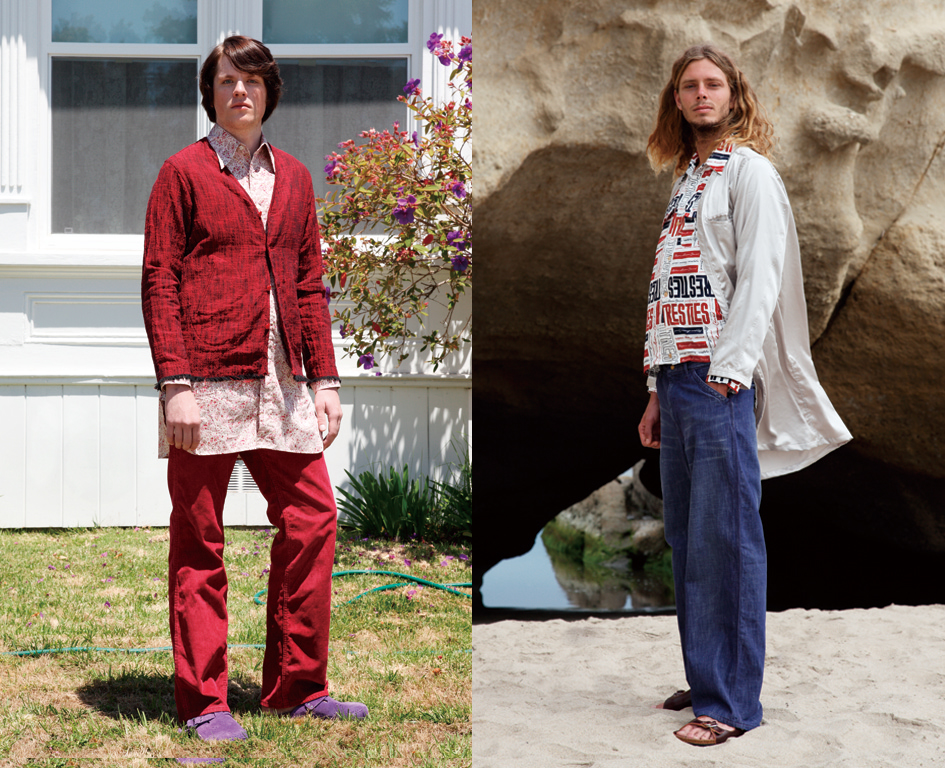
NEEDLES 2009 FALL WINTER Photographed in New York

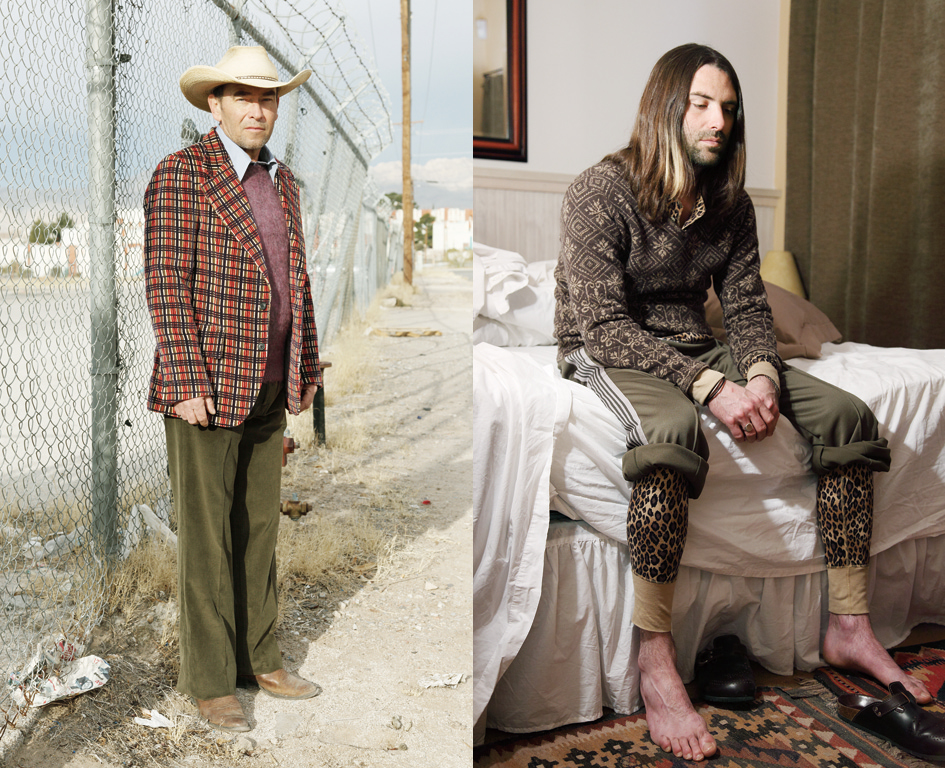
NEEDLES 2009 FALL WINTER Photographed in New York
Getting into the World
of Advertising Photography
“What I did in NYC was basically the same as I did in Tokyo, but the difference is I could get more and more jobs in the latter city.” After coming back to Japan in 2009, a series of portraits taken by Masahiro Shoda gradually came to attention in Tokyo. And his schedule quickly became fully booked after holding an exhibition and being featured on a magazine. Needless to say, he could seize the chance because of his attitude to work and the quality of his photography.

ー After the shootings with NEPENTHES, you held an exhibition in Japan.
I showed a series of photos I had taken in NYC along with the ones taken in Santa Cruz. It was fall in 2010 and the exhibition was titled “SM.” An editor of BRUTUS magazine who visited the exhibition gave me an opportunity to work with them for their photography issue. I was asked to take photos together with photographer Shingo Wakagi. I think people saw the magazine thought “who is this man?” at that time, but they began to recognize me since then. After a while I got an opportunity to meet with art director Ogi Atsushi to show my portfolio. We later worked together for some advertising projects such as Takarajima and Tohoku Shinkansen Bullet Train.
ー I see. The exhibition opened up a new opportunity.
Yes, I believe so. Ogi gave me job offers that connected the photos I had taken by then with advertising. It was significant that he understood what kind of photographer I was.
ー Around 2013, you were involved in so many advertising projects that COMMERCIAL PHOTO magazine dedicated 26 pages to you.
Yeah, that’s true. It was such a long article. Around that time, I began to feel that I became able to express various type of things through photography. And I got used to handle digital equipment. But I didn’t think that I did big things back in those days.
ー How did you think then?
I did enjoy seeing that my photo became a big poster or a full-page newspaper ad, and being involved in a larger scale project with a bigger budget. However, everything in my mind at that time was about contents of a project and how to shoot it. I couldn’t make my personal work because I spent my entire time shooting for commissioned works.
ー Your schedule was fully booked before you notice.
Because the scale and budget of a project became bigger and bigger, I kind of realized that I entered a new phase of my career. But it wasn’t always successful. I used to do a part-time job at a rice mill and a Soba restaurant, and there was a period I couldn’t earn money even though I belonged to an agency. We had the earthquake disaster, too. Therefore, I always have a feeling that it cannot be worse than that.
ー Having such difficult times, haven’t you ever thought of quitting photography?
Never. Actually, I wish to be a photographer again in my next life. Photography is the best. I think taking a photo is such a cool thing to do.
ー When do you feel that you do excellent work?
As for commissioned works, it is maybe when I participate in a big project or when I can make my client and other staff fully satisfied. A company sometimes spends years to develop a product before I photograph it. Because an advertisement caps such a sum of effort, we’ve got to create satisfying one for everyone involved in the project. If a celebrity participates in it, we have to make him/her happy, too. I’ve always become nervous. It hasn’t changed from the beginning. Well, maybe the feeling should not be described as nervous, it’s more like…
ー You are filled with a feeling of tension.
Yes, it’s like having a one-to-one battle. That is why it builds a sense of achievement after shooting. I can’t afford to fail or make excuses. Before you think “I should have done it,” do it. That’s so simple. It’s really nice when I realize that I could build credibility with both my art director and client.
ー Have you ever been interested in advertisement photography?
wanted to be an ad planner when I was a junior high school student. It was when Masahiko Sato, a creative director of famous TV ad projects, began to appear in TV shows. Such TV ad projects were full of dreams. During high school, I started to take photos. Though I tried to join a photography club, the club suspended all the activities because I was the only member of the club and my school didn’t want to pay the cost to run it (laughs). I also studied photography at Tokyo Zokei University, but now I cannot remember what I actually did there.
ー Although you couldn’t be a planner, you are now working in advertising. You’ve never stopped taking photos even when you were busy getting tips in NYC. You are such an unwavering person.
Maybe. I guess that I’m able to make steady efforts on what I really want to do. I think I like to narrow my focus when approaching my work.
ー I guess that advertising jobs you’ve currently participated in also emphasize persistence and a clearer focus.
Yes, I definitely have to identify and clarify all the requests that my client makes. In fact, I even have to create something that exceeds their expectations significantly and arouses emotion in them. Because photographers use digital devices these days, people can check photos on a monitor right after those were taken. So, I have to convince them of the quality of my work on the spot. They may feel it also by seeing the way I setup my photography equipment. When setting it up, I should care not just about the appearance, but also about things like leaving some space for a celebrity model to walk over to his/her standing position as well as placing a monitor out of his/her sight. Everything.
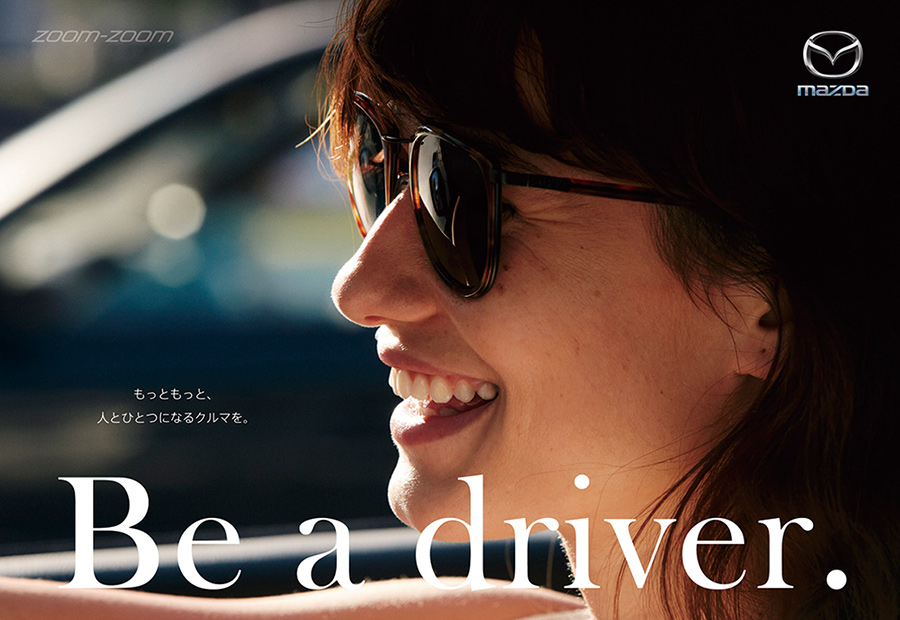
ADVERTISEMENT MAZDA「Be a driver」/ CD:新妻英信(博報堂)/ AD:藤田誠 / Pr:伊藤ひろし(TYO)、神田洋二郎(TYO)

MOVIE サントリー「オランジーナ」先生登場 / 企画制作:電通+電通クリエーティブX / DIR:関口現
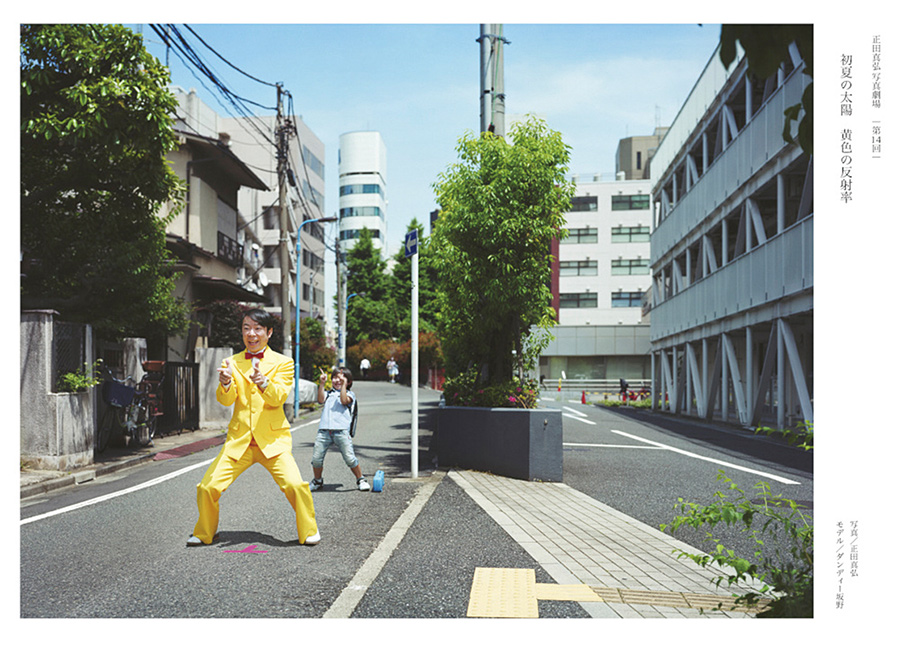
MAGAZINE 太田出版「ケトル」正田真弘写真劇場 / vol.19(2014年6月号)「ダンディ坂野」
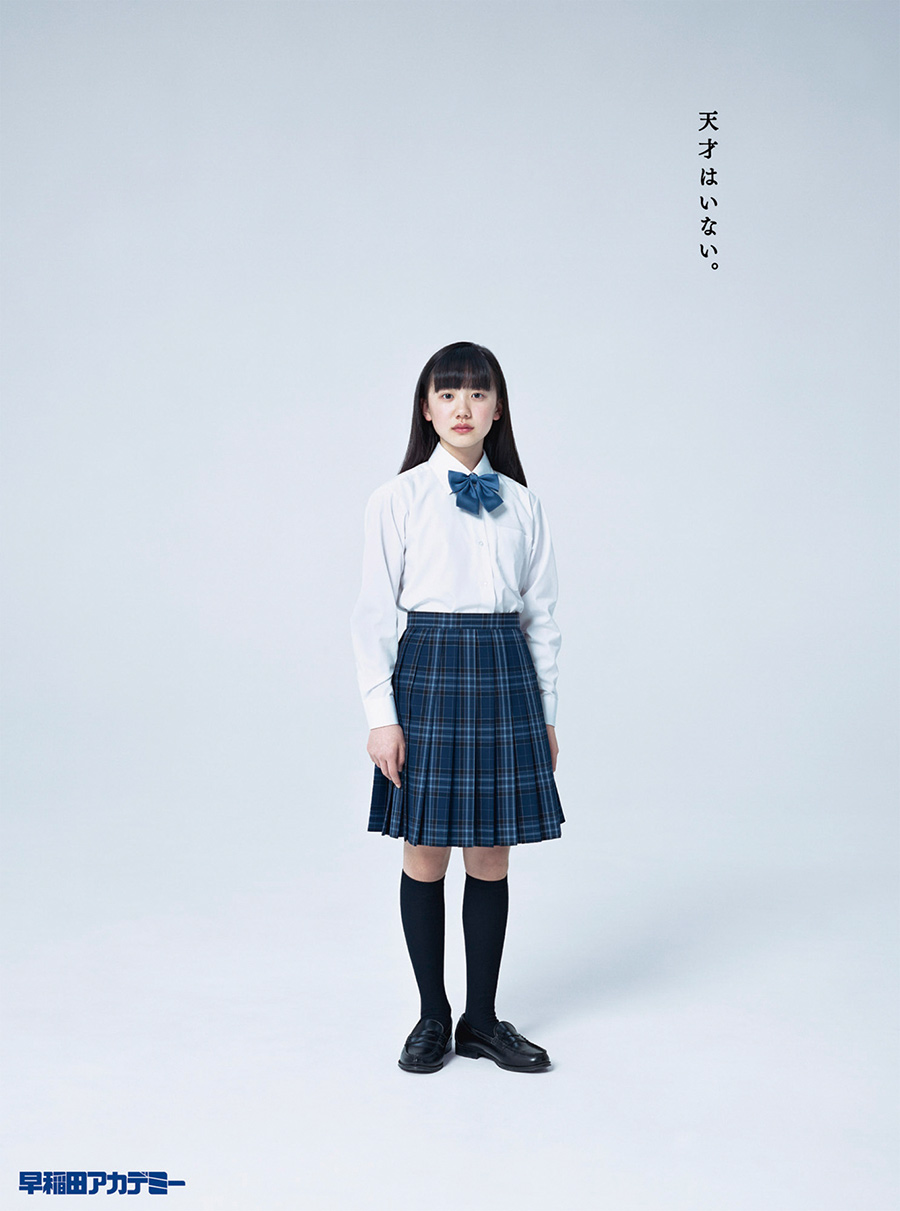
ADVERTISEMENT 早稲田アカデミー 企画制作 アサツー ディ・ケイ + T&T TOKYO / CD+C 渋谷三紀(ADK)/ AD+D:トミタタカシ(T&T TOKYO)/ Pr:林美将 / M:芦田愛菜 ST:浜松あゆみ / HM:久慈拓路 / レタッチ:佐藤加奈子 / 制作:中川岳
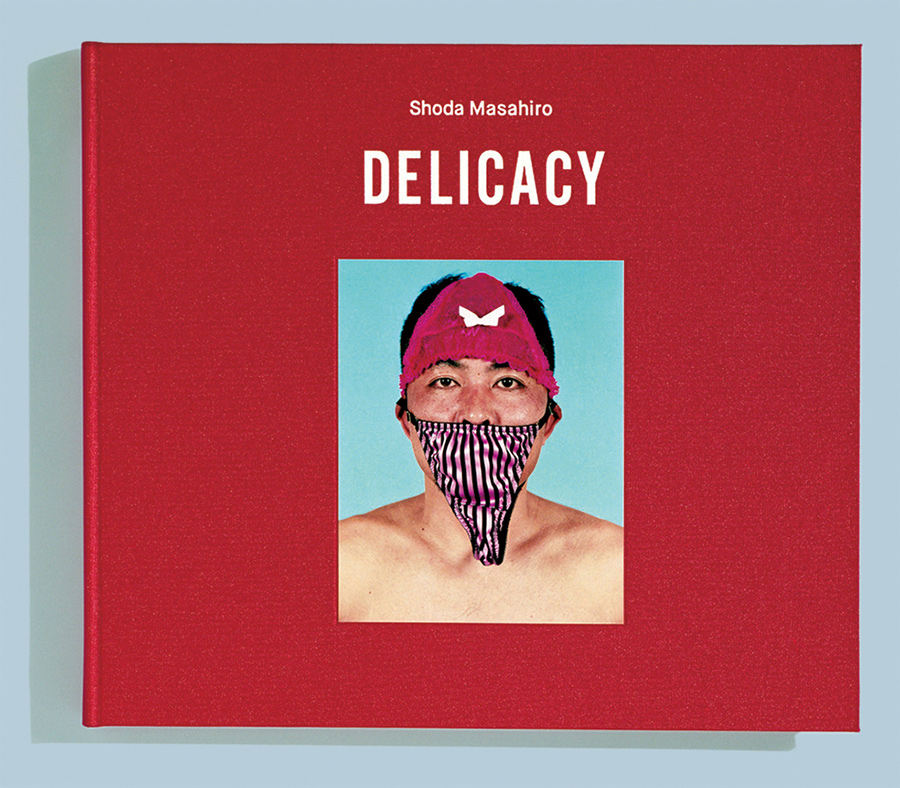
ADVERTISEMENT MAZDA「Be a driver」/ CD:新妻英信(博報堂)/ AD:藤田誠 / Pr:伊藤ひろし(TYO)、神田洋二郎(TYO)
The Publication of DELICACY
and His Future Plans
Masashiro Shoda published a photo book last year. In the book, there are a series of photos of models wearing their favorite underpants on their heads in front of a white background. Shoda then placed a landscape photo of Tokyo on the facing page of each portrait. This unique, enigmatic book shows a complex mosaic pattern made with Japanese sex culture in Tokyo, hovering around blurred boundaries between a real intention and a stated reason, and a kinky man and a straight man. While working hard as an advertising photographer, Shoda keeps exploring the artistic expression of photography. He never stops challenging.
ー Currently, you have also been involved in various movie projects. Is the approach different from the one for still photography?
For movie making, you need to have a director for production, a lighting technician for lighting as well as an editor for editing. For still photography, photographers do all those things. So, when working on a movie, I tend to focus more on image creation. And that brings me new findings whenever participating in a movie project.
ー Last year, you published a photo book titled DELICACY.
Yes, but I had a really hard time until the book was completed. While advertising photography is like to answer a question, making a photo book is more like to put a question. I fretted over whether my question can be recognized as a question. When taking a bath every day in my house, I was thinking if the things I wonder about were worth showing to others. My impression over it varied from day to day. I sometimes thought it was great and at other times I felt it was crap. But now I’m fully satisfied with the result. Much to my surprise, the book won the Special Award of Japan Book Design Award.
ー Wow !
Yeah, it’s a wow, a remarkable accomplishment. The book’s printer, Dai Nippon Printing, was also pleased at that. The funniest thing is, although the competition has three major awards including the Minister of Education Award, the METI Minister Award and the Tokyo Governor Award, no book received the Tokyo Governor Award in this year. The organizer alternatively set the Special Award and gave it to my book. I guess that they couldn’t give me an award bearing the name of Tokyo Governor or ministers because of the contents of my book even though they thought my book deserved it (laughs). You know, people in the book put underpants on their heads and Tokyo was depicted in an ironic way. But I’m really confident in the design of the book. Please also have a look at the special website for the book at www.shodamasahiro.tokyo.
ー Do you think you can keep creating your personal work in the future? I’ve heard that you couldn’t make it for a period of time because you were too busy working on advertising projects.
I think so. I am planning to join an art book fair in Tokyo in this coming October for the first time, intending to exhibit at the Z booth, the lowest-ranked area (laughs). For the fair, I will bring this book along with some small goods and, hopefully, a zine. There are other ongoing personal photo projects I’d like to keep going, such as the archive project of the photos of the TV studio sets of NHK and a series of photos capturing comedians doing their shticks. The latter is shown on KETTLE magazine and people I have photographed really loved it. I often receive a letter from the comedians.
ー Do you have any future goals as a photographer right now?
To be honest, I have few types of work I’d like to try right now although I had a lot in the beginning such as making a billboard advertisement in Shibuya, photographing particular figures and creating an advertising image for Suntory. But such dreams of mine have come true and there’s nothing left now. Then I tried to be involved in as many projects as possible, but it caused me to be ill in this May. Now I know I’m not able to do such a thing, too (laughs). So, I just carry out my assigned tasks by taking good photos with concentration. It makes me filled with a sense of achievement. I enjoy a feeling of tension while working and it hasn’t changed from the very beginning. In short, it’s a matter of life or death. I feel like that (laughs).
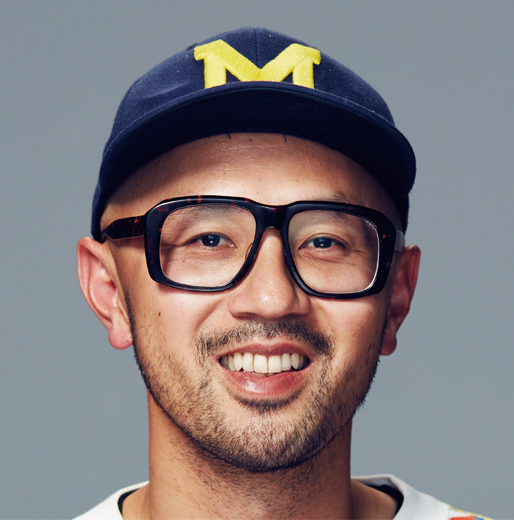
SHODA MASAHIRO / Photographer. Born in 1977 in Tochigi, Japan. After graduated from Department of Design at Tokyo Zokei University, he became an assistant of a photo studio and then began to study under Azuma Ishida. He moved to the U.S. as a freelance photographer in 2005 and spent three years in NYC, exploring his own style of photography by taking a series of portraits. In 2008, he received the 1st Place Award for the self-portrait section of IPA, International Photography Award. After going back to Japan in 2009, Shoda has been participating in various kinds of projects such as advertising, fashion magazines, CD covers and TV commercials by mainly taking portrait photography. His main advertising jobs include: Kirin Beverage’s volvic, Sony Life Insurance, KIRIN’s Tanrei Green Label, Otsuka Pharmaceutical’s POCARI SWEAT, Suntory’s TORYS CLASSIC, Waseda Academy, Zebra, JR Kyshu, TOYOTA, docomo, TOTO BIG and Asahi Shimbun. Many of his works won prestigious awards such as TAPA (Tokyo Advertising Photographers Award) 2015 and the METI Minister Award of APA Award 2017. In 2016, he established his own agency WHITNEY and became one of the members.
https://wtny.jp
